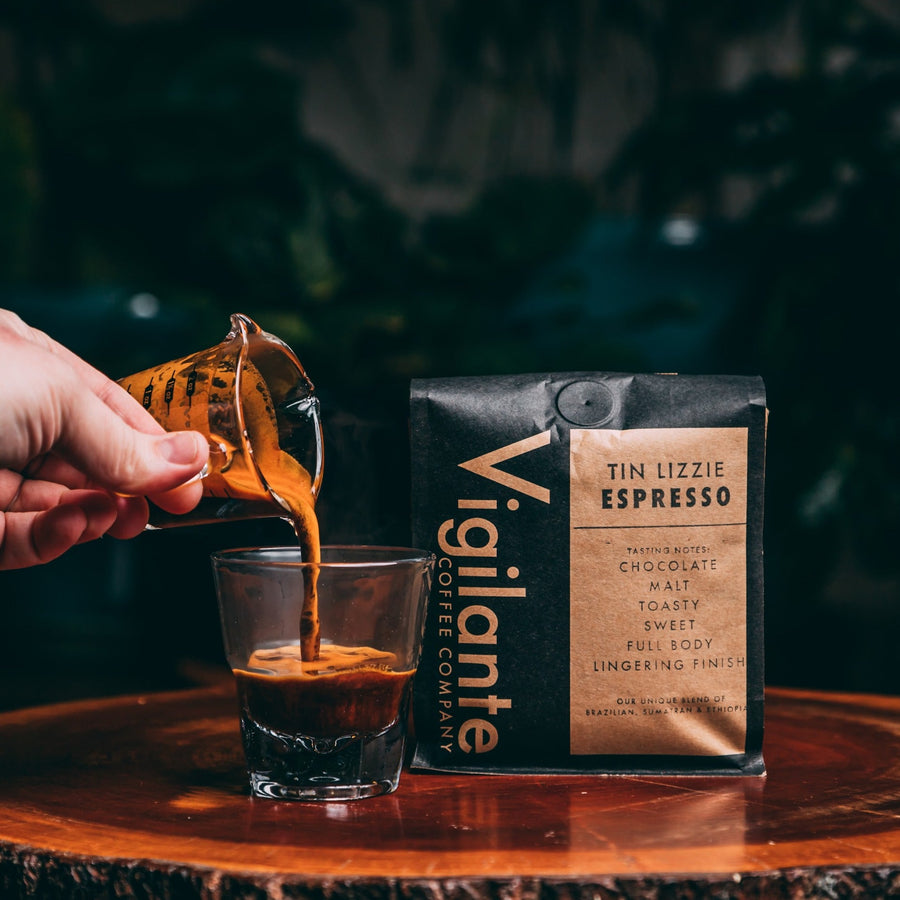Uncovering the Origins Behind Premium SOE Single Origin Espresso
Uncovering the Origins Behind Premium SOE Single Origin Espresso
Blog Article
Coffee Beans Uncovered: Uncovering the Tricks of Espresso and Blended Coffee Beans
When you think concerning coffee, what comes to mind? Is it the rich scent of coffee or the complexity of a well-crafted mix? Comprehending the nuances of coffee beans can transform your experience.
The Origins of Coffee: A Historical Perspective
Although coffee is now a staple in coffee culture worldwide, its beginnings map back to the early 20th century in Italy. You may be surprised to find out that the development of coffee was driven by a need for speed and efficiency. In 1901, Luigi Bezzera patented the first coffee maker, aiming to make coffee faster than typical techniques. This advancement rapidly caught the attention of Italian coffee enthusiasts, bring about the coffee bars we recognize with today.
Understanding Coffee Beans: Qualities and varieties
When you think of espresso, it's vital to recognize the various bean varieties and their unique tastes. Each kind brings a distinct personality to your mug, influenced by factors like roast degrees. Comprehending these aspects can elevate your espresso experience substantially.
Espresso Bean Varieties
As you discover the globe of coffee, you'll swiftly find that not all beans are developed equivalent; each range brings its own unique tastes and features to your cup. One of the most prominent kinds consist of Arabica and Robusta. Arabica beans are known for their smooth, nuanced tastes and reduced caffeine content, making them a favored among coffee lovers. On the various other hand, Robusta beans load a stronger strike with higher high levels of caffeine and a more bitter preference, commonly preferred in blends for their crema-enhancing high qualities. You could additionally encounter specialized beans like Liberica and Excelsa, which use distinct accounts and are much less usual. Each variety provides something different, so trying out will certainly help you find your best coffee.
Taste Accounts Described
Understanding the flavor accounts of various coffee beans can raise your coffee experience. Each bean variety provides distinct features that affect preference, scent, and mouthfeel. Arabica beans often provide a sweeter, more intricate taste with hints of fruit and floral notes, while Robusta beans often tend to be bolder, with nutty and earthy touches.
When you check out single-origin beans, you might find distinct local flavors-- Central American beans might be bright and citrusy, whereas Italian blends commonly provide abundant, chocolatey notes.
Roast Levels Impact
Roast degrees play a necessary function in shaping the flavor and aroma of espresso beans, influencing your total coffee experience. Understanding these roast degrees helps you select the coffee that fits your taste preferences. Experimenting with different roasts can lead to delightful explorations, enhancing your gratitude for coffee.
The Art of Mixing: What Makes Blended Coffee Distinct
What makes combined coffee so interesting? It's everything about the art of integrating beans from various beginnings, roast degrees, and taste accounts. You're not just mixing; you're creating an unified equilibrium that highlights the staminas of each bean when you blend. You can try out different combinations to improve sweetness, body, and acidity, resulting in a mixture that's richer and a lot more complex than a single-origin coffee.
Mixing also enables you to accommodate diverse preference choices. You can craft a blend that's smooth and smooth or one that's strong and durable, depending on your target market. And also, blending can assist preserve uniformity, offering a reputable taste experience no matter seasonal variations in beans. Whether you're a barista or a home brewer, grasping the art of mixing opens up a world of creativity and taste opportunities, making your coffee experience truly distinct.
Taste Profiles: Sampling Notes of Espresso vs. Blended Coffee
Blended coffee offers a globe of flavor possibilities, yet when it comes to coffee, you're looking at a more concentrated experience. Coffee commonly showcases vibrant, rich tastes with a thicker mouthfeel.
On the other hand, combined coffee offers an intricate tapestry of flavors. You can discover a range of sampling notes, from nutty and wonderful to floral and fruity. Each mix can offer something special, commonly integrating beans from various areas to produce a well balanced account.
While espresso provides a strike, mixed coffee welcomes you to enjoy the nuances. Whether you favor the robust toughness of coffee or the elaborate tastes of blended coffee, each cup tells its own tale, waiting for you to discover.
Brewing Techniques: Refining Your Coffee Shot
To achieve the excellent espresso shot, recognizing the developing techniques is crucial, as even small modifications can considerably affect the flavor and top quality. Beginning by utilizing fresh, high-grade coffee beans; grind them simply prior to developing for optimum flavor. Go for a great work, regarding the uniformity of table salt, to guarantee perfect extraction.
Next, take notice of your water temperature; it needs to be in between 195 ° F to 205 ° F. Too hot or as well cool can ruin your shot. Use about 18-20 grams of coffee for a dual shot, and tamp it equally with solid pressure to develop an uniform puck.
Finally, control your useful content removal time; go for 25-30 seconds. A longer removal can result in resentment, while also short can lead to sour tastes. Practice these strategies constantly, and you'll improve your abilities, attaining that rich, full-bodied espresso shot you hunger for. Appreciate the journey!
The Role of Roast Degrees in Espresso and Blended Coffee
After mastering the brewing methods for espresso, it's time to consider just how roast degrees influence the flavor profile of your coffee. The roast level can significantly change your coffee's scent, body, and preference. Light roasts have a tendency to highlight the coffee's beginning, supplying intense acidity and fruity notes, while medium roasts balance acidity and sweetness, producing a well-shaped taste. Dark roasts, on the various other hand, bring out bold, rich flavors with reduced level of acidity, commonly producing chocolate or great smoky undertones.

Checking Out Sustainability: Ethical Sourcing of Coffee Beans
When you pick coffee, you're not just selecting a flavor; you're choosing concerning the effect on farmers and the environment. Comprehending Fair Trade methods, natural farming approaches, and accreditation requirements can help you sustain sustainable coffee sourcing. Let's explore just how these factors add to an extra moral coffee experience.
Fair Trade Practices
Fair Trade practices play an essential role in making certain that coffee beans are sourced fairly and sustainably. When you pick Fair Profession coffee, you sustain farmers that obtain reasonable salaries and work in risk-free conditions. By choosing for Fair Profession brand names, you're not simply delighting in a rich mug of coffee; you're making a favorable influence on the lives of those that expand it.
Organic Farming Methods
As you check out the globe of honest coffee sourcing, natural farming methods arise as a necessary part of sustainability. Furthermore, it usually leads to more powerful, much healthier coffee plants, resulting in richer flavors in your mug. When you opt for natural coffee, you're making a mindful choice that profits both the planet and your taste buds.
Accreditation Criteria Explained
Recognizing certification requirements is important for anyone thinking about ethically sourced coffee. These requirements, such as Fair Profession, Jungle useful source Alliance, and USDA Organic, assurance that coffee is expanded under lasting techniques. You support farmers who stick to ethical labor methods and ecological security. when you pick certified coffee.
Fair Trade certification focuses on offering fair earnings and functioning problems, while Rainforest Alliance highlights biodiversity and community preservation. Next time you're at your regional coffee shop or grocery store, look for these labels, and really feel good understanding your coffee acquisition favorably impacts areas and the environment.
Frequently Asked Concerns


Exactly How Does Altitude Affect the Development of Coffee Beans?
Altitude impacts coffee bean development by influencing temperature level and climate. Higher elevations commonly create denser beans with even more facility flavors, while reduced altitudes can result in faster development however less flavorful end results. You'll taste the distinction!
What's the Difference In Between Arabica and Robusta Beans?
Arabica beans are sweeter and extra intricate, while Robusta beans have a more powerful, harsher taste with higher caffeine content. You'll locate Arabica preferred for specialized coffees, whereas Robusta's frequently used in instant coffee and espresso blends.
Can Coffee Beans Go Negative or Lose Taste Gradually?
Yes, coffee beans can spoil and lose flavor in time. If you store them improperly or keep them as check my reference well long, they'll wither. Always maintain your beans in a closed container far from light and moisture.
What Are the Health And Wellness Benefits of Drinking Coffee?
Consuming alcohol espresso boosts your power, enhances mental quality, and might reduce the threat of certain conditions. It's abundant in antioxidants, sustains metabolism, and can enhance mood, making it a beneficial option for your day-to-day regimen.
Just How Does Water High Quality Effect Espresso Extraction?
Water quality considerably impacts espresso removal. It influences the solubility of oils and flavors, influencing taste and scent. Utilizing filtered water can boost your coffee, ensuring a balanced and enjoyable mug every single time you make.
Coffee Beans Uncovered: Discovering the Secrets of Espresso and Blended Coffee Beans.
Understanding the flavor profiles of different espresso beans can raise your coffee experience.Roast degrees play an important duty in forming the flavor and fragrance of espresso beans, affecting your general coffee experience (SOE).Blended coffee provides a globe of flavor possibilities, yet when it comes to coffee, you're looking at a much more focused experience.After mastering the brewing methods for espresso, it's time to consider exactly how roast levels influence the flavor profile of your coffee
Report this page